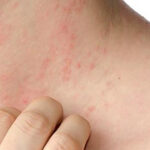Leukemia, in general terms, is a form of cancer that affects the bone marrow and blood cells.
According an article in Medical News Today, leukemia is categorized in accordance with the type of white blood cell that is involved, either lymphocytes or myeloid cells.
Another distinction would be whether the cancer is developing quickly as an acute disease or if the cancer is progressing slowly, such as in the case of chronic disease.
This leaves us with four main types of leukemia, each affecting the blood cells differently.
The chronic type of leukemia affects middle-aged to older adults. The acute type of leukemia tends to affect mainly children and younger adults.
The four main forms of leukemia are:
- Chronic myelogenous leukemia (CML)
- Hairy cell leukemia (HCL)
- Acute myeloid leukemia (AML)
- Chronic lymphocytic leukemia (CLL)
About Chronic Lymphocytic Leukemia
CLL begins in the bone marrow and affects lymphocytes, a type of white blood cell. Stem cells, or mother cells, are produced in and released from the bone marrow. They are known to interact closely with immune cells such as lymphocytes.
Yet when CLL is present, abnormal cells are produced and stem cells cannot function, leaving the lymphocytes unable to fight infection. The abnormal white blood cells overcome the healthy cells, thereby compromising the patient’s immune system. This leaves CLL patients at risk for infections.
Approximately twenty-five percent of CLL patients will be diagnosed with an autoimmune disorder. This results in the immune system going on the offensive, in error, against its own healthy tissue.
About Thrombocytopenia
A fairly common occurrence in CLL is the immune system attacking clotting cells (platelets). This is called thrombocytopenia.
A word that we hear quite frequently during the COVID pandemic is “immunocompromised.” Unfortunately, that fits the description of a CLL patient. It indicates that the patient’s body is not able to fight off infections or other conditions as well as a healthy person.
Patients also have to cope with immunosuppression caused by various medications used to treat CLL.
About Treatment for CLL
Chemotherapy has been the standard of care for many leukemia disorders including CLL. Doctors and patients can feel confident that chemotherapy will attack the cancer cells. However, they do not “target” the cells. The chemotherapy agent cannot distinguish the cancer cells from the healthy cells.
Chemotherapy’s Benefits and Risks
Rapidly dividing cells such as those in the bone marrow, hair follicles, and lining of the digestive system can be destroyed by chemotherapy.
However, there are risks involved such as:
- Leukopenia, or a low number of white blood cells
- Thrombocytopenia, or a low number of platelets
- Pancytopenia or low white blood cells, red blood cells, and platelets
- Neutropenia, or fewer neutrophils
COVID-19 and CLL
CLL patients must be cognizant of their susceptibility to COVID-19 due to CLL’s effects and the immunosuppression relating to treatment. Studies have found that eight out of ten people with CLL are hospitalized resulting in three deaths out of every ten hospitalizations.
A study involving 941 individuals diagnosed with CLL and COVID-19 found a greater risk of death in people who:
- Were older
- Were being treated for CLL during that period
- Reported cardiac failure
Conclusion
Chemotherapy has proven to be effective against CLL. However, the bone marrow is generally affected, and the immune system is suppressed.
Last modified: April 11, 2023







